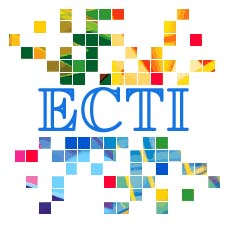Robust Digital Control for a PFC Boost Converter
Main Article Content
Abstract
A PFC boost converter is a non-linear system whose small perturbation model is changed at each operating point depending on a duty ratio. And when a duty ratio, a load resistance and an input voltag are changed, a small perturbation model is changed greatly. A robust controller for the PFC boost converter is needed to suppress an output voltage change at load sudden change while attaining a high power factor and a low harmonic. In this paper, the combining method and design methods of two approximate 2-degree-of-freedom (A2DOF) controllers which simplify the overall controller and attain good robustness are proposed. The proposed controller is actually implemented on a Micro-processor and is connected to the PFC boost converter. Experimental studies demonstrate that the proposed robust controller is effective to suppress the output voltage change to improve the power factor and to decrease the harmonic.
Article Details
This journal provides immediate open access to its content on the principle that making research freely available to the public supports a greater global exchange of knowledge.
- Creative Commons Copyright License
The journal allows readers to download and share all published articles as long as they properly cite such articles; however, they cannot change them or use them commercially. This is classified as CC BY-NC-ND for the creative commons license.
- Retention of Copyright and Publishing Rights
The journal allows the authors of the published articles to hold copyrights and publishing rights without restrictions.
References
[2] M. Xie, “Digital Control For Power Factor Correction," Unpublished master’s thesis, Virginia Polytechnic Institute and State University, 2003.
[3] E. D. Bolat, K. Erkan, S. Postalcioglu, “Using Current Mode Fuzzy Gain Scheduling Of PI Controller for UPS Inverter," IEEE EUROCON 2005, pp.1505–1508, 2005.
[4] M. Fu and Q. Chen, “A DSP Based Controller for Power Factor Correction (PFC) in a Rectifier Circuit," IEEE APEC 2001, pp.144–149, 2001.
[5] K. De Gusseme, D. M. Van de Sype and J. A. A. Melkebeek “Design Issues for Digital Control of Boost Power Factor Correction Converters," IEEE ISIE 2002, pp.731–736, 2002.
[6] W. Zhang, G. Feng, Y. Liu and B.Wu, “A Digital Power Factor Correction (PFC) Control Strategy Optimized for DSP," IEEE Transactions on Power Electronics, vol. 19, no. 6, pp.1474–1485, 2004.
[7] E. Figueres, J. M. Benavent, G. Garcera and M. Pascual, “A Control Circuit With Load- Current Injection for Single-Phase Power-Factor-Correction Rectifiers," IEEE Transactions on Industrial Electronics, vol. 54, no. 3, pp.1272–1281, 2007.
[8] A. de Castro, P. Zumel, O. Garcia, T. Riesgo and J. Uceda “Concurrent and Simple Digital Controller of an AC/DC Converter With Power Factor Correction Based on an FPGA," IEEE Transactions on Power Electronics, vol. 18, no. 1, pp.334-343, 2003.
[9] S. Buso, P. Mattavelli, L. Rossetto and G. Spiazzi “Simple Digital Control Improving Dynamic Performance of Power Factor Preregulators," IEEE Transactions on Power Electronics , vol. 13, no. 5, pp.814–823, 1998.
[10] K. Higuchi, K. Nakano, T. Kajikawa, E. Takegami, S. Tomioka, K. Watanabe, “A New Design of Robust Digital Controller for DCDC Converters," IFAC 16th Triennial World Congress, (CD-ROM), 2005.
[11] K. Higuchi, E. Takegami, K. Nakano, T. Kajikawa, S. Tomioka, “Digital Robust Control for DC-DC Converter with Second-Order Characteristics," ECTI-CON’2009, pp.161–169, 2009.
[12] S. Sasaki, and H. Watanabe, “Analysis of Multiple Operating Points for Dynamical Control of Switching Power Converters," IEIC Technical Report, pp.33–38, 2005.


